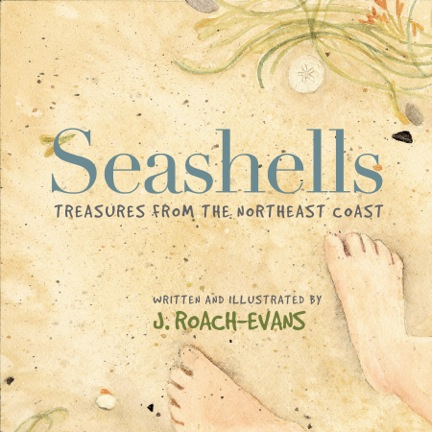|
A few weeks ago (in December) we were on Cape Cod in Massachusetts and we visited Seagull beach in West Yarmouth for the first time. It was a perfect beach for a nice long walk and there were tons of seashells. As you can see from the photos above there were piles of Slipper Shells (from the Slipper snail) and many Horseshoe crab carapaces (shells). As with many Cape Cod beaches the Horseshoe crab was quite prevalent. Horseshoe crabs actually shed their shells as they grow so that explains why they are so numerous. We also found several egg casings of the Knobbed Whelk (pictured above) and many Knobbed Whelk shells. It is such a sweet little beach I look forward to going back again in the future. We also shot this short video - enjoy!
0 Comments
In April we were in Plymouth for an educational beach walk with the Beach Ambassadors from the Goldenrod Foundation. It turned out to be a really great field trip with lots of seashells found! We met in the parking lot at Long Beach and there I was able to show and talk about my seashell collection so that everyone was primed before we set out to comb the beach. We then carpooled in 4-wheel drives out to the field station house and from there set out on the beach to search for seashells. It was a beautiful day, a bit windy, but not too cold. The Ambassadors are in training to help with educational efforts to preserve and protect this rich environment. For more information check out their website and blog: http://www.goldenrod.org/blog/become-a-beach-ambassador-in-2015 Here are a few pics from the field trip... I'm in front with Dorie Stolley, Program Manager for the Goldenrod Foundation and behind us the wonderful Beach Ambassadors. Dorie found this beautiful Sea Scallop. It's not something you usually see; never mind one with so much color! This was found on the harbor side. (Plymouth Harbor) A European Oyster and a Stimpson's Whelk. This is the second time we have found a European Oyster here on the harbor side.
Not long ago I was invited by Dorie Stolley of the Goldenrod Foundation to be a guest leader on a field trip to discover the mollusks of Long Beach in Plymouth, Ma. I was thrilled to accept the invitation.
On Sunday, April 27th Dorie, my husband and I, the Beach Ambassadors, and PACTV (Plymouth Area Community Television) reporter Brian braved the rather chilly temperatures for a beach combing afternoon. At first many of the finds were pieces of shells -some hard to distinguish - except for the iridescent bits of blue mussel. But as we made our way down the beach we were rewarded with many wonderful finds. We found HUGE periwinkles, slipper shells, surf clams, blue mussels, quahogs, black clams, soft shell clams, gould’s pandoras, northern moon snails, bay scallops, waved whelks, a stimpson whelk, a sweet little new england whelk and one gorgeous specimen of a New England Neptune (also called a ten-ridged whelk)! It was a wonderful afternoon and I was so pleased to meet and be in the company of so many environmentally conscious people. I was able to talk about the seashells I love and the creatures that inhabit them. It was a great day - one that we enjoyed immensely! My thanks to everyone who participated and special thanks to Dorie for the invitation! I’m especially pleased with the work that the Goldenrod Foundation is doing to protect and preserve the nature of Long Beach. I was honored to be a part of their mission. On the vernal equinox (March 20, 2014), my husband and I walked the spit of Plymouth Long Beach along the harbor channel. It was a good hike and we were happy to find lots of shells. I picked up a few as you can see from the photo - The top shells are the two halves (or valves) of an oyster, many Moon snail tops (I think there is a craft for them in the future), Periwinkles, two Gould's Pandora shells, one Flat Slipper Shell, a False Angel Wing, a huge Operculum from a Moon Snail, a broken New England Dog Whelk, three Bay Scallops, a neat rock, two pieces of beach glass and a fish bone vertebra. We also found the carcass of a dolphin and later we found two of it's ribs on the shoreline. The shell that surprised me the most is the oyster shell. It looks more like a European Oyster Shell and I'm curious if anyone knows if this is possible. (I have read that they are farming them in Maine?) But the big treasure of the day - is that large Operculum - it is the "door" to the Moon Snail - it covers it's aperture - the opening of the shell. We also saw some Brant geese, Common Eider ducks and Sanderlings - sweet! European Oyster? The dead dolphin : ( The Operculum. (door to opening of Moon Snail) Brant Geese & Sanderling. Dolphin ribs. Eider ducks.
|
AuthorJoanne is a New England based watercolor artist, writer, and the author/illustrator of children's books. She adores the seashore and loves to share that love by filming her beach combing adventures. Archives
April 2022
Categories
All
|






















 RSS Feed
RSS Feed